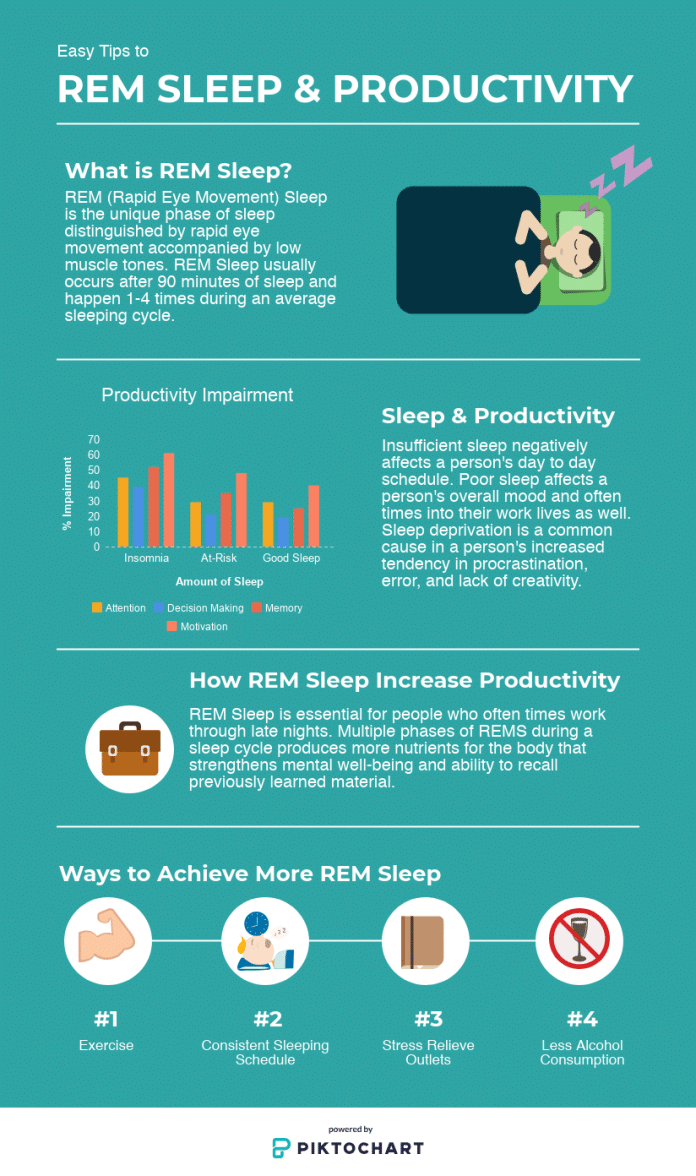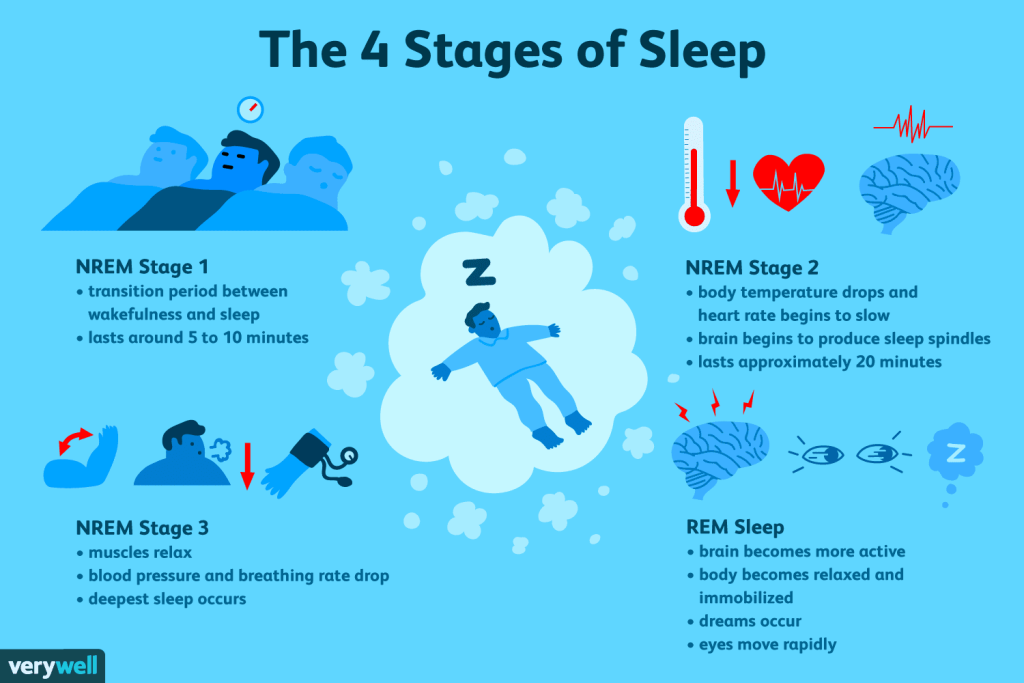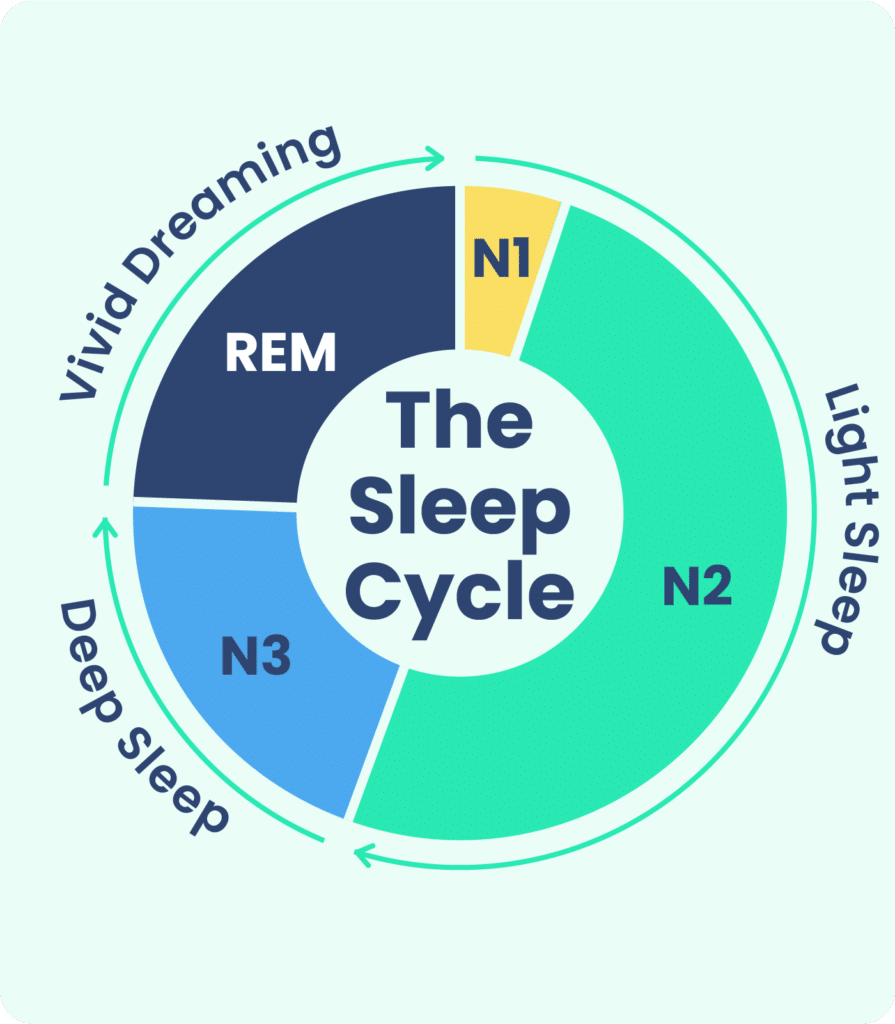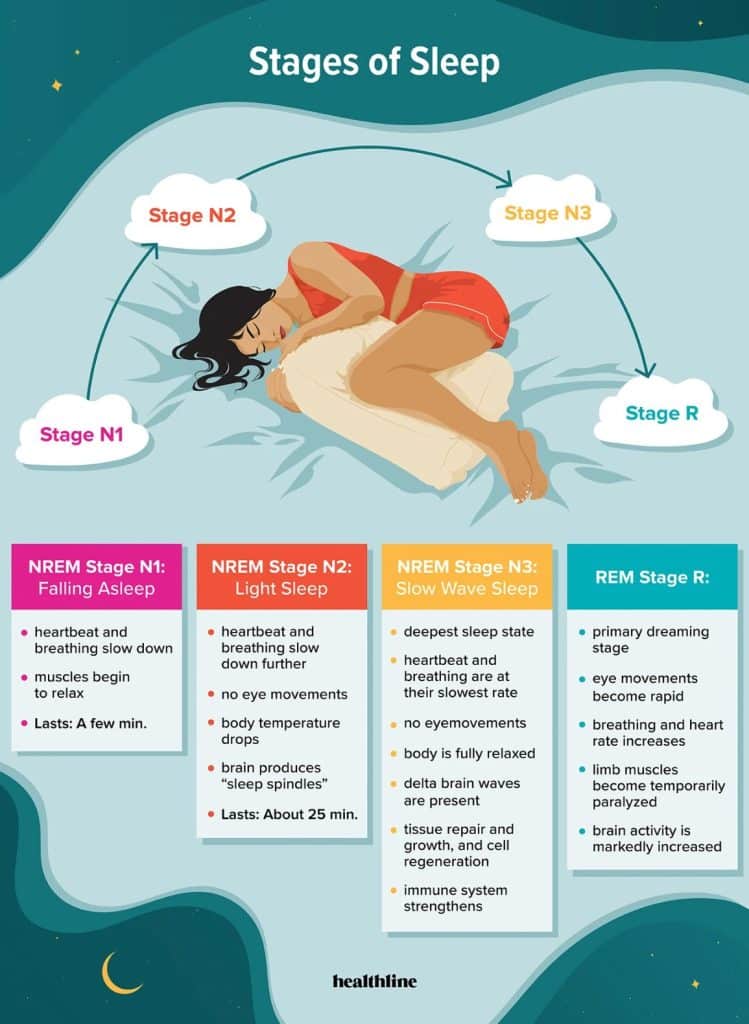During REM sleep, your brain becomes highly active and your eyes rapidly move back and forth behind your closed eyelids. This is the stage of sleep where dreams occur. Although your body remains paralyzed, your heart rate and breathing become irregular, resembling the patterns of being awake. This captivating phase of sleep allows your brain to process emotions and memories, aiding in learning and overall cognitive function. Understanding what happens during REM sleep can shed light on the fascinating world of our dreams and the essential role they play in our overall well-being. During REM (rapid eye movement) sleep, your brain is highly active, and you experience vivid dreams. This stage of sleep is characterized by a combination of physiological changes that set it apart from other sleep stages. Understanding the stages and characteristics of REM sleep can provide insight into its functions and the impact of its deprivation on your overall well-being.
Review contents
Non-REM sleep
First, let’s take a brief look at the stages of sleep that occur before REM sleep. Non-REM (NREM) sleep is divided into three stages: N1, N2, and N3. N1 is the transition between wakefulness and sleep, where you may experience a relaxed state with some dreamlike images. During N2, your body starts to enter a deeper sleep state, and your brain waves become slower. Finally, N3 is the deepest stage of sleep, also known as slow-wave sleep, which is crucial for physical restoration and growth.
REM sleep
REM sleep typically occurs 90 minutes after falling asleep and repeats throughout the night in cycles lasting about 90-120 minutes. It is during REM sleep that most dreaming occurs. This stage is characterized by rapid and random eye movements, increased brain activity, and temporary muscle paralysis.
Characteristics of REM sleep
Brain activity
While you sleep, your brain remains active, but the patterns of brain waves are different during REM sleep compared to wakefulness. During REM sleep, your brain waves resemble those of wakefulness, indicating high levels of brain activity. This increased activity is associated with dreaming and various cognitive processes.
Rapid Eye Movement
One of the distinguishing features of REM sleep is the rapid and spontaneous movement of your eyes. These eye movements do not correspond to the movement of objects in your dreams, but they are believed to be associated with the vivid visual imagery experienced during this stage.
Muscle paralysis
During REM sleep, your body undergoes temporary muscle paralysis, known as REM atonia. This paralysis prevents you from acting out your dreams, ensuring that you do not physically respond to the dream content. This important mechanism allows you to remain secure and prevents potential injuries.
Dreaming
Dreaming is most commonly associated with REM sleep. With increased brain activity, vivid and emotionally charged dreams are experienced during this stage. Dreams can be bizarre, realistic, or a combination of both. Researchers believe that dreams play a role in memory consolidation and emotional processing, which we’ll explore further later in this article.
Increased heart rate and blood pressure
During REM sleep, your heart rate and blood pressure can fluctuate and increase. It is believed that these changes are related to the heightened brain activity and emotional experiences that occur during dreams. While these changes are normal during REM sleep, significant and persistent increases in heart rate and blood pressure during sleep may be indicative of underlying health issues.
Irregular breathing
Another characteristic of REM sleep is irregular breathing patterns. Breathing may become faster and shallower during this stage, resembling patterns observed during wakefulness. However, this irregularity is not a cause for concern unless it is accompanied by other sleep-related breathing disorders.
Functions of REM sleep
REM sleep serves several essential functions that contribute to overall health and well-being. Let’s explore these functions in more detail:
Memory consolidation
REM sleep plays a critical role in consolidating memories and enhancing learning. Research has shown that REM sleep helps strengthen memory storage, particularly for emotionally significant events and procedural memory (skills and tasks). During this stage, the brain processes and consolidates newly acquired information, storing it in long-term memory for future retrieval.
Emotional processing
REM sleep is closely linked to emotional processing. It allows the brain to process and regulate emotions, helping you better understand and cope with emotional experiences. Dreams during REM sleep often involve emotional content, providing a platform for the brain to analyze and integrate emotions into personal experiences.
Learning and creativity
REM sleep is also vital for learning and creativity. It facilitates the synthesis of information from diverse sources, aiding in problem-solving, and promoting creative thinking. High levels of brain activity during this stage foster connections between different regions of the brain, facilitating the integration of information and fostering new insights.
Brain development in infants
REM sleep plays a crucial role in brain development, especially in infants. It is during REM sleep that connections between neurons are refined, promoting healthy brain development. Babies spend a significant amount of time in REM sleep, which helps lay the foundation for cognitive, emotional, and social development.
Duration and frequency of REM sleep
Length of REM sleep
The duration of REM sleep changes throughout the night. Initially, REM sleep episodes are shorter, around 10 minutes, but they gradually increase in length as the night progresses. The final REM sleep period may last up to an hour. On average, adults spend about 20-25% of their total sleep time in REM sleep, decreasing with age.
Frequency of REM sleep
The frequency of REM sleep cycles depends on the total duration of your sleep. Generally, REM sleep cycles occur every 90-120 minutes, with each subsequent cycle lasting longer. As the night goes on, the REM sleep proportion increases, reaching its peak towards the morning. This pattern allows for ample opportunity for dream experiences and the associated cognitive processes.
Disorders and disruptions of REM sleep
While REM sleep is essential for overall well-being, certain disorders and disruptions can disturb its quality and quantity. Here are a few notable examples:
REM sleep behavior disorder
In REM sleep behavior disorder (RBD), the muscle paralysis usually experienced during REM sleep is absent. This leads to acting out dreams physically, potentially causing injury to oneself or a sleep partner. RBD can be a symptom of underlying neurodegenerative diseases, such as Parkinson’s disease, and should be evaluated by a medical professional.
Nightmares
Nightmares are vivid and disturbing dreams that occur during REM sleep. They can often cause intense fear, anxiety, and even wake you up from sleep. While occasional nightmares are normal, frequent and distressing nightmares may indicate underlying issues that require medical attention.
Sleep paralysis
Sleep paralysis occurs when you awaken during REM sleep but experience temporary paralysis and the inability to move or speak. This can be accompanied by hallucinations, making the experience frightening. Although sleep paralysis is generally harmless, seeking medical advice can provide reassurance and guidance on managing this phenomenon.
Narcolepsy
Narcolepsy is a neurological disorder characterized by sudden and uncontrollable episodes of sleepiness or falling asleep at inappropriate times. These episodes may involve a direct transition from wakefulness to REM sleep, leading to symptoms such as sleep paralysis, hallucinations, and excessive daytime sleepiness. Individuals with narcolepsy often experience fragmented and disrupted REM sleep.
Impact of REM sleep deprivation
Deprivation of REM sleep can have significant consequences on your cognitive functioning, mood, and overall health. Here are some effects associated with REM sleep deprivation:
Cognitive impairments
Lack of REM sleep can impair various cognitive functions, including memory, attention, and problem-solving. Memory consolidation is particularly affected, hindering the ability to retain and recall information effectively.
Mood disturbances
REM sleep deprivation has been linked to mood disorders such as depression and anxiety. REM sleep plays a crucial role in emotion regulation and processing, and interruptions in this stage can contribute to emotional instability and heightened negative emotions.
Weakened immune system
REM sleep deprivation can weaken your immune system’s function, making you more susceptible to infections and illnesses. This is because REM sleep is involved in immune response regulation, and inadequate REM sleep can negatively impact immune system functioning.
Weight gain
Inadequate REM sleep is associated with weight gain and obesity. Disruptions in REM sleep can interfere with hormonal regulation, particularly affecting appetite-regulating hormones such as leptin and ghrelin. This can lead to increased hunger, cravings, and overeating.
Increased risk of chronic conditions
REM sleep deprivation has been linked to an increased risk of developing chronic conditions such as cardiovascular disease, diabetes, and hypertension. These associations may be attributed to the impact of sleep deprivation on blood pressure regulation, insulin sensitivity, and inflammation.
In conclusion, REM sleep is a crucial stage of sleep characterized by heightened brain activity, rapid eye movement, temporary muscle paralysis, and vivid dreaming. Its functions include memory consolidation, emotional processing, learning and creativity, and brain development in infants. The duration and frequency of REM sleep vary throughout the night, and disruptions can occur in the form of disorders. REM sleep deprivation can have negative consequences on cognitive function, mood, immune system health, weight management, and the risk of developing chronic conditions. Prioritizing adequate and quality REM sleep is essential for overall well-being and optimal functioning. Sweet dreams!






























